Muir-Hill: the end of the line!
Posted by Chris Graham on 8th September 2023
Jonathan Whitlam concludes his fascinating account of the Muir-Hill development story by considering the company’s sad demise, and the reasons behind it.
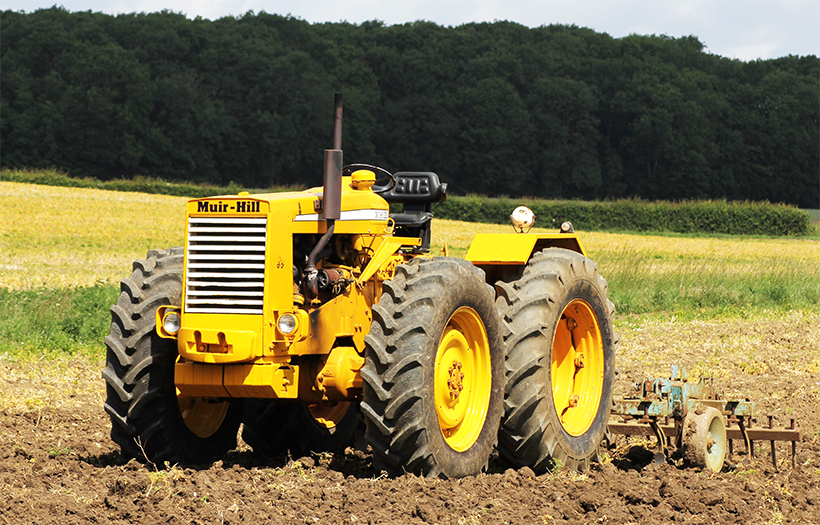
The 101 was the very first tractor built by Muir-Hill, based on the Ford 5000 skid unit but powered by a Ford six-cylinder engine, it was designed both for agricultural and industrial use. Features including equal-sized wheels, high ground clearance and rugged construction remained at the core of Muir-Hill design thereafter.
In this, the final part of our Muir-Hill tractor story, we turn our attention to the last years of tractor production. The name of Muir-Hill had become firmly linked with agriculture, as well as the construction industry within which it originated. But the company’s core products – loading shovels, rough-terrain forklifts and tractors – had also become quite a common sight on British farms.
However, the early 1980s saw things for Muir-Hill come to a pretty abrupt end, as a combination of economics and the proliferation of four-wheel-drive tractors from mainstream manufacturers, ate into the company’s profitability in the agricultural sector.
A big year
Nineteen seventy-eight had been a big year for the Gloucestershire-based firm; not only had it launched the new Series III range of tractors (complete with the new Spacecab), but it had also undergone the latest in a long line of parent company shake-ups which, in January of that year, saw the organisation become part of newly-formed Babcock Construction Limited.

The option of a creeper-speed gearbox made the Muir-Hill 101 ideal for mounting equipment such as drainage trenchers, as here. This machine also carries a front-mounted blade to refill the trench.
Throughout Muir-Hill’s history it had become routine for the business to change hands. Originally located in Manchester, building railway locomotives and shunting tractors based on Fordson skid-units in the early 1920s, Muir-Hill Service Equipment Limited was the first operation to use the Muir-Hill name. Then, in 1926, this business was merged with another company to form Muir-Hill (Engineers) Limited, after which it began production of the first Fordson Model F-based Muir-Hill dumper trucks then, the following year, the first loading shovel was introduced.
The company’s first takeover occurred in 1931, when a new firm called E Boydell & Company Limited was formed out of the original business by one of the directors – Edward Boydell. The resultant company continued with the Muir-Hill trade name, although it was no longer part of the actual name of the business. Under the new regime, construction equipment became the real driving force behind the Muir-Hill business, thanks primarily to the huge success of its line of dump trucks.
Under the E Boydell name, Muir-Hill enjoyed a long period of stability and success, and moved into the full-scale use of hydraulics for its loading shovel range during the 1950s. But, in 1959 the business was sold to Winget Limited, based in Rochester, Kent. Famous for its line of cement mixers, this long-established firm moved the Muir-Hill operation to Gloucester in 1962, with ‘Muir-Hill’ still being used as the trading name for the products built there. It was under Winget ownership that the first Muir-Hill tractor arrived in 1966, in the shape of the 101.
In 1968, Winget was bought by Babcock & Wilcox Limited, and the long-standing E Boydell & Company Limited was renamed Muir-Hill Limited as part of the newly set-up Babcock UK Investments Limited. Thus the 1969 introduction of the 110 and 161 was under Babcock control.
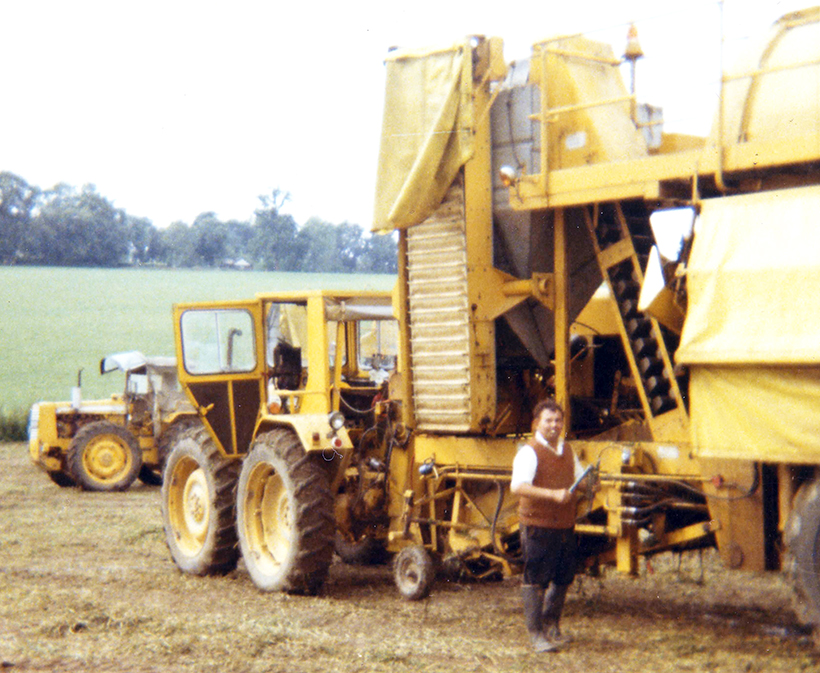
The Muir-Hill 101 established itself as an ideal prime mover for agriculture, being perfect for ploughing and heavy cultivation work. It also found favour for pulling large trailed pea viners, with its generous ground clearance allowing it to safely straddle the rows of pre-cut peas that were then taken into the viner by its pick-up reel. Both FMC and Mather & Platt produced trailed viners, with the latter being a very tall machine with single axles and large, industrial tyres. They dwarfed the tractor pulling them, even when it was a Muir-Hill 101. This mid-1970s photograph shows 101s busy harvesting peas with Mather & Platt viners in Norfolk. County 1174s were also used by this team to draw the viners, but most drivers preferred the 101 as it had a much tighter turning circle and a higher driving position. (Pic: Paul Reeve)
In 1971, Muir-Hill was reorganised as part of the Construction Equipment Division of the Babcock Group and, under this arrangement, the Series II versions of the 121 and 111 tractors were introduced, followed by the 171, in 1975. Which brings us back to 1978, when Muir-Hill became part of Babcock Construction Limited.
The final series
As we saw in Part 5 of this story, Muir-Hill launched the Series III range of tractors in 1978, building on the success of the Series II range with an updated design that was ready for the new decade. There were more models to choose from in the range, starting with the 116hp, Perkins-powered 111 and the 132hp 121. Next came a new model, the 141, which was available fitted with either a Perkins 132hp engine or a 143hp Ford unit. While, at the top of the range sat the mightily impressive, 177hp 171.
With effectively five models to choose from, the Muir-Hill tractor range had never been so expansive, or so sophisticated. Tractor sales were also very buoyant during the latter half of the 1970s, and expectations for the new range were undoubtedly high. Sales remained at a high level as the 1970s turned into the 1980s, but then it all started to go wrong.
That’s not to say that the Muir-Hill Series III tractors weren’t what farmers wanted, or that the designs were outdated. Indeed, Muir-Hill tractors were still renowned for their pulling ability and extreme ruggedness, and they remained the tractor of choice for many farmers and agricultural contractors.
But the problem was that the major tractor manufactures – Ford, Massey Ferguson, John Deere, International Harvester etc – were all beginning to put more emphasis on producing factory-built four-wheel-drive versions of their popular models. Then, somewhat inevitably, it didn’t take long for these new, competitively-priced machines to start making serious inroads into the niche market that conversion builders like Muir-Hill had created.
What’s more, the larger mainstream manufacturers were also producing more powerful tractors that could rival Muir-Hill’s six-cylinder models, and it was often these machines that were made available with 4WD.
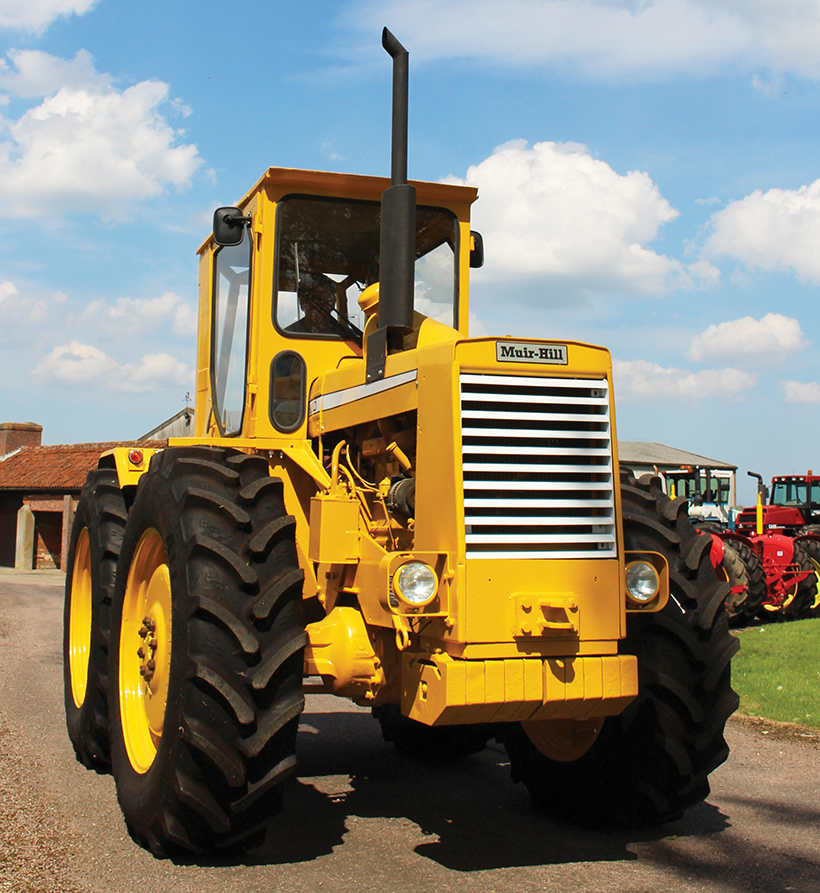
The Muir-Hill 110 was a Perkins-powered version of the original 101, and arrived in 1969. It provided choice on the home front as well as a suitable engine for global markets that didn’t have an established Ford presence.
Even bigger machines
It should be remembered that, even by the mid-1980s, an 85hp tractor was seen by many farmers as being a big machine. But larger holdings had a requirement for larger machines and so, from 1969, tractor builders such as Ford began to offer the six cylinder 8000 and 9000 models in the UK, as well as in North America. However, these were 2WD models and Ford didn’t seem interested in offering a 4WD version at that stage, which left the market free for the likes of County Commercial Cars and Muir-Hill to use those machines as the basis for 4WD conversions.
By 1977, the big Ford six-cylinder tractors had metamorphosed into the new 8700 and 9700, and these were offered with 4WD, albeit with unequal-sized wheels – smaller at the front to minimise the turning circle. At that time Muir-Hill was producing its Series II model range, with the 121 being similar to the 8700 in power output, although it offered superior traction thanks to much better weight distribution as well as better ground clearance.
In fact, the 9700 was trounced by the Muir-Hill 171 in terms of available power and traction thanks to its equal-sized wheels. The 171, like the 161 before it, was rightly seen as the pinnacle of tractor size, at least in terms of tractors built in Britain and making use of a rigid chassis. The nearest thing to it was the County 1474, based originally on the Ford 9700 but, with 149hp compared to the 171’s 177, the County was a much smaller machine.
However, that all changed in 1979, when Ford launched the TW range of three models, with the largest – the TW-30 – having an output of 188hp and factory-fitted 4WD, albeit still with smaller-sized front wheels. This meant that the Series III version of the Muir-Hill 171 was now up against a true rival and, when County used the TW-30 as the base for its new 1884 model, the competition in a sector that Muir-Hill once dominated suddenly became decidedly tough. And that’s without the larger, six-cylinder tractors being sold in the UK by Massey Ferguson (2000 Series) and John Deere (40 Series), both of which offered a 4WD option.
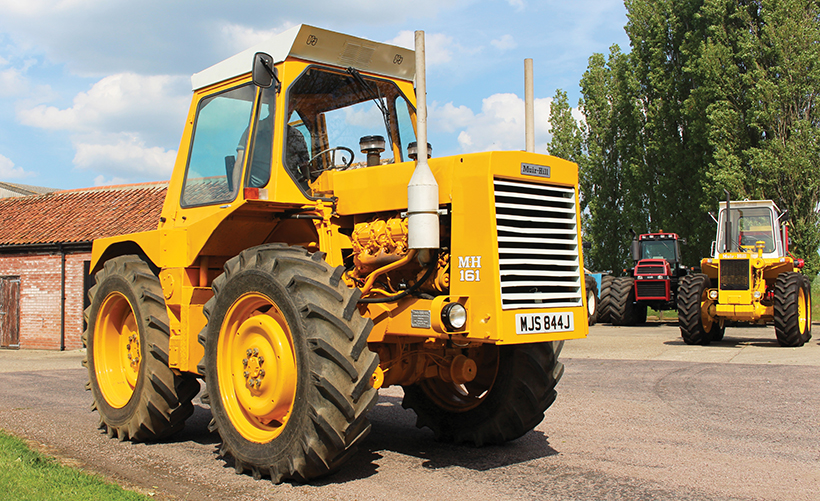
The first big Muir-Hill arrived in 1969 in the shape of the mighty 161 – the largest tractor to be built in Britain at that time. Predominantly designed for industrial tasks, several of these behemoths did find themselves working in agriculture.
A further blow to the conversion builders came in 1981, when Ford announced its new Series 10 tractors. All but the smallest of these was offered with the option of 4WD, which left the independent conversion builders effectively having to compete with their own skid unit supplier!
As 1982 rolled around, it was clear that Muir-Hill tractor sales had started to suffer, and were falling below profitable levels. So, with a degree of inevitability, tractor production would finish at Gloucester in October 1982, making the Series III the last generation of the big, yellow machines.
The end
The cessation of tractor production coincided with a change of hands, when Muir-Hill’s parent company Babcock International took the decision to sell Babcock Construction Equipment Limited – of which Muir-Hill was a part – to Wibau AG, based in West Germany. However, Wibau’s parent company, the German IBH Group, ran into financial difficulties of its own in November 1983, and various parts of the business had to be sold off.
Muir-Hill and Winget were run by the Receivers until the June of 1984, still producing construction equipment and rough-terrain forklifts. Then the operation was bought by Sandersons Forklifts, based in Lincolnshire.
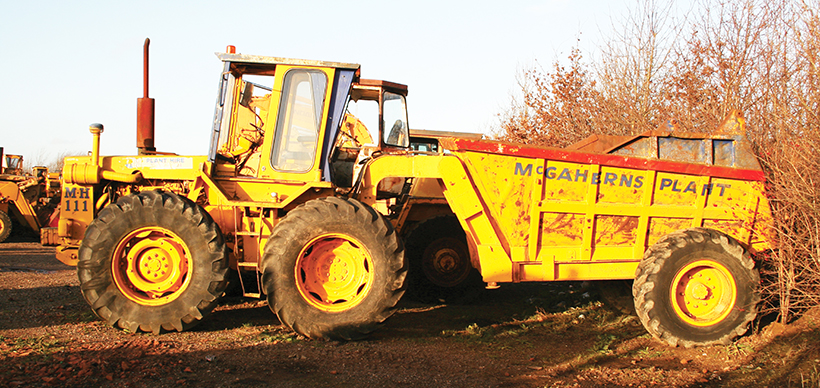
Series II Muir-Hill tractors were launched in 1972, and this Perkins-powered 111 is seen in typical industrial form connected to a dump truck. This layout made for an impressive materials-handling tool, with plenty of power and tight turning ability.
According to Stuart Gibbard’s excellent Ford Tractor Conversions book, Sandersons finished building three Muir-Hill 171 tractors that had remained uncompleted for two years at the factory in Gloucester. These were the last of the line and were sold – minus cabs – to British Steel for haulage duties. But any thoughts that there then may have been to resurrect Muir-Hill tractor production were dashed in 1990, when Sandersons went into liquidation and Muir-Hill was bought by Aveling-Barford of Grantham, in Lincolnshire.
Soon after this the Muir-Hill business was bought by Lloyd Loaders Limited, based near Halifax. This company had become experts at rebuilding Muir-Hill loading shovels, and even produced its own conversion in 1985, the same year that it produced the first Myth-Holme 131 tractor, named after the Mytholm Works in which it was built. Fitted with a Ford six-cylinder engine and Dual Power transmission, the new machine very closely resembled a Muir-Hill tractor, and several were built before all production ceased in the 1990s.
Gone but not forgotten
The last true Muir-Hill tractors may have been built a long time ago, but their legacy certainly lives on. It’s hard to overstate the importance of the original 101 model, in terms of its use as an agricultural tractor, as well as excelling at being an industrial machine in many, many applications.
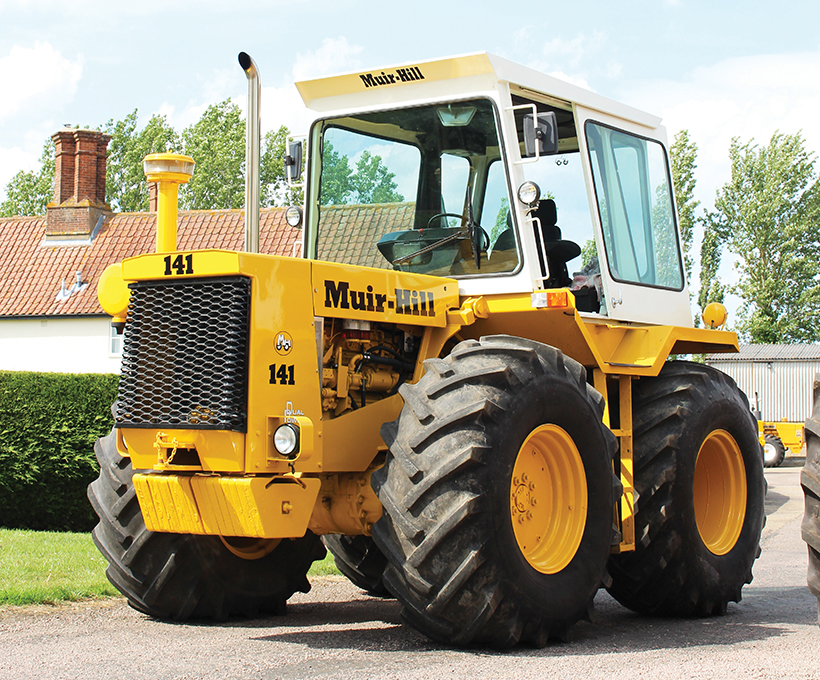
The Series III Muir-Hills were launched in 1978, as the final incarnation of the design. The 141 was a new model that could be purchased as a Ford- or Perkins-powered machine. The most significant development on the Series III was the new Spacecab, which provided a spacious operating environment.
This was a relatively compact, 108hp tractor with six-cylinder engine and equal-sized wheels and 4WD that revolutionised many farming operations. Used by farmers and contractors alike, the 101 was superb at heavy cultivation work, including ploughing, mole draining, subsoiling and cultivating. It was also often the tractor of choice for pea vining gangs, and many 101 tractors were used on the front of Mather & Platt and FMC trailed viners, providing motive power for these large machines in all weather conditions.
The Muir-Hill 101 was the best choice for this operation thanks to its high ground clearance, so that it could easily straddle the rows of cut peas left by the swathers, and its tight turning circle for a four-wheel-drive machine, made it manoeuvrable enough to turn efficiently on the headlands. Its legendary tractive abilities also came to the fore when hauling the large, heavy viners in wet conditions.
The Series II range built on that success, with greater comfort for the driver in a properly-designed, quiet cab, while the Series III represented the pinnacle of luxury thanks to the aptly-named Spacecab. In short, Muir-Hill tractors were exactly what was needed by many farmers and, in particular, agricultural contractors.
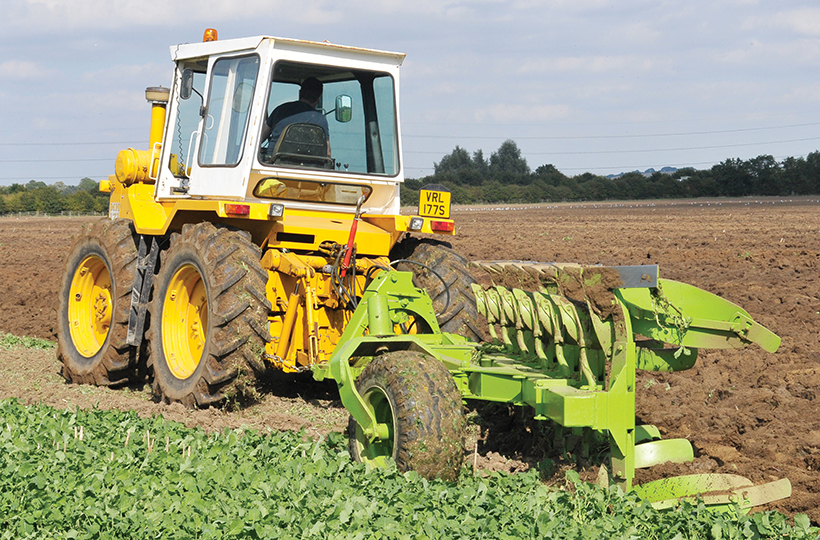
The Series III Muir-Hill flagship was the 171, a Perkins-powered V8 monster with 177hp on tap, giving it more than enough power to operate large ploughs and cultivators. Now preserved, this example is a fitting legacy for the big yellow tractors that reigned as a unique form of farm power for 16 years, and carved a niche for themselves in both agriculture and industry.
Even up until recent times, drainage contractors have retained their old Muir-Hill machines for pulling stone carts, as these ‘old stagers’ have continued to beat modern machines when it comes to delivering traction in difficult conditions and doing so both affordably and reliably.
Luckily, many enthusiasts have had the foresight to save plenty of Muir-Hill tractors, and to also restore them to as new condition. It’s great that these impressive machines have been saved for posterity, and can continue to impress future generations just as they once did when brand new during the 1960s, ‘70s and ‘80s.
This report comes from a recent issue of Ford & Fordson Tractors magazine, and you can get a money-saving subscription top this magazine simply by clicking HERE
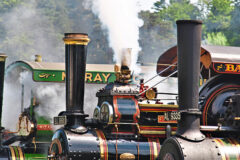
Previous Post
The brilliant Bon Accord Steam & Vintage Fair
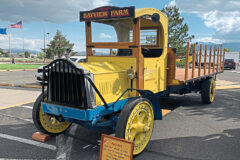
Next Post
The American Truck Historical Society’s National Convention & Truck Show



